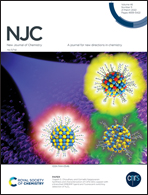Preparation of N/O-codoped quinoline pitch-based porous carbons for high-quality supercapacitor electrodes†
Abstract
In order to create advanced carbon electrodes for supercapacitors, we selected a quinoline pitch (QLP) catalytically synthesized by a self-rising pressure method as a carbon precursor to prepare N/O-codoped high-capacity porous carbons by KOH high-temperature activation. The as-fabricated QLP-based porous carbons have hierarchical and interconnected pore structures rich in 2–10 nm small mesopores together with high surface N/O-doping contents (up to 3.69 at% N and 10.11 at% O), giving them excellent electrochemical performances. In particular, the porous carbon obtained at 700 °C can deliver impressive specific capacitances of 452 F g−1 at 0.5 A g−1 and 270 F g−1 even at a high current density of 50 A g−1 in 6 M KOH solution. Moreover, the assembled symmetric supercapacitor cell can output a high specific energy density of 11.86 W h kg−1 at 5020.13 W kg−1 and maintain an initial capacity retention of 91.48% after charging/discharging 10 000 cycles at 1 A g−1. This work demonstrates a realistic path toward large-scale production of high-quality carbon electrode materials for supercapacitors starting from a quinoline monomer.



 Please wait while we load your content...
Please wait while we load your content...